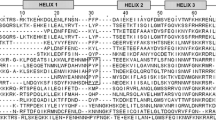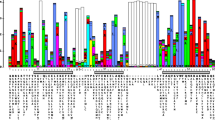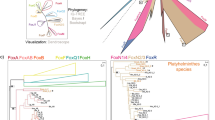Abstract
TALE homeodomain proteins are an ancient subgroup within the group of homeodomain transcription factors that play important roles in animal, plant, and fungal development. We have extracted the full complement of TALE superclass homeobox genes from the genome projects of seven protostomes, seven deuterostomes, and Nematostella. This was supplemented with TALE homeobox genes from additional species and phylogenetic analyses were carried out with 276 sequences. We found 20 homeobox genes and 4 pseudogenes in humans, 21 genes in mouse, 8 genes in Drosophila, and 5 genes plus one truncated gene in Caenorhabditis elegans. Apart from the previously identified TALE classes MEIS, PBC, IRO, and TGIF, a novel class is identified, termed MOHAWK (MKX). Further, we show that the MEIS class can be divided into two families, PREP and MEIS. Prep genes have previously only been described in vertebrates but are lacking in Drosophila. Here we identify orthologues in other insect taxa as well as in the cnidarian Nematostella. In C. elegans, a divergent Prep protein has lost the homeodomain. Full-length multiple sequence alignment of the protostome and deuterostome sequences allowed us to identify several novel conserved motifs within the MKX, TGIF, and MEIS classes. Phylogenetic analyses revealed fast-evolving PBC class genes; in particular, some X-linked PBC genes in nematodes are subject to rapid evolution. In addition, several instances of gene loss were identified. In conclusion, our comprehensive analysis provides a defining framework for the classification of animal TALE homeobox genes and the understanding of their evolution.






Similar content being viewed by others
References
Aboobaker AA, Blaxter ML (2003) Hox gene loss during dynamic evolution of the nematode cluster. Curr Biol 13:37–40
Abu-Shaar M, Ryoo HD, Mann RS (1999) Control of the nuclear localization of Extradenticle by competing nuclear import and export signals. Genes Dev 13:935–945
Adams MD, Celniker SE, Holt RA, et al. (2000) The genome sequence of Drosophila melanogaster. Science 287:2185–95
Aguinaldo AMA, Turbeville JM, Linford LS, Rivera MC, Garey JR, Raff RA, Lake JA (1997) Evidence for a clade of nematodes, arthropods and other moulting animals. Nature 387:489–493
Altschul SF, Madden TL, Schäffer AA, Zhang J, Zhang Z, Miller W, Lipman DJ (1997) Gapped BLAST and PSI-BLAST: a new generation of protein database search programs. Nucleic Acids Res. 25:3389–3402
Anderson DM, Arredondo J, Hahn K, Valente G, Martin JF, Wilson-Rawls J, Rawls A (2006) Mohawk is a novel homeobox gene expressed in the developing mouse embryo. Dev Dyn 235:792–801
Belloni E, Martucciello G, Verderio D, Ponti E, Seri M, Jasonni V, Torre M, Ferrari M, Tsui LC, Scherer SW (2000) Involvement of the HLXB9 homeobox gene in Currarino syndrome. Am J Hum Genet 66:312–319
Berthelsen J, Zappavigna V, Mavilio F, Blasi F (1998) Prep1, a novel functional partner of Pbx proteins. EMBO J 17:1423–1433
Bertolino E, Reimund B, Wildt-Perinic D, Clerc RG (1995) A novel homeobox protein which recognizes a TGT core and functionally interferes with a retinoid-responsive motif. J Biol Chem 270:31178–31188
Bielawski JP, Yang Z (2003) Maximum likelihood methods for detecting adaptive evolution after gene duplication. J Struct Funct Genomics 3:201–212
Bürglin TR (1995) The evolution of homeobox genes. In: Arai R, Kato M, Doi Y (eds) Biodiversity and evolution. National Science Museum Foundation, Tokyo, pp 291–336
Bürglin TR (1997) Analysis of TALE superclass homeobox genes (MEIS, PBC, KNOX, Iroquois, TGIF) reveals a novel domain conserved between plants and animals. Nucleic Acids Res 25:4173–4180
Bürglin TR (1998a) The PBC domain contains a MEINOX domain: Coevolution of Hox and TALE homeobox genes? Dev Genes Evol 208:113–116
Bürglin TR (1998b) PPCMatrix: a PowerPC dotmatrix program to compare large genomic sequences against protein sequences. Bioinformatics 14:751–752
Bürglin TR, (2005) Homeodomain proteins. In: Meyers RA (ed) Encyclopedia of molecular cell biology and molecular medicine. Wiley-VCH Verlag, Weinheim, pp 179–222
Bürglin TR, Cassata G (2002) Loss and gain of domains during evolution of cut superclass homeobox genes. Int J Dev Biol 46:115–123
Bürglin TR, Ruvkun G (1992) New motif in PBX genes. Nature Genet 1:319–320
Chourrout D, Delsuc F, Chourrout P, Edvardsen RB, Rentzsch F, Renfer E, Jensen MF, Zhu B, de Jong P, Steele RE, Technau U (2006) Minimal ProtoHox cluster inferred from bilaterian and cnidarian Hox complements. Nature 442:684–687
Consortium IHGS (2004) Finishing the euchromatic sequence of the human genome. Nature 431:931–945
Copley RR, Aloy P, Russell RB, Telford MJ (2004) Systematic searches for molecular synapomorphies in model metazoan genomes give some support for Ecdysozoa after accounting for the idiosyncrasies of Caenorhabditis elegans. Evol Dev 6:164–169
De Ley P (2006) A quick tour of nematode diversity and the backbone of nematode phylogeny. In: Community TCeR (ed) WormBook; http://www.wormbook.org
Dildrop R, R¸ther U (2004) Organization of Iroquois genes in fish. Dev Genes Evol 214:267–276
Duboule D (1994) Guidebook to the homeobox genes. Oxford University Press, Oxford
Edgar RC (2004) MUSCLE: a multiple sequence alignment method with reduced time and space complexity. BMC Bioinformatics 5:113
Feijóo CG, Manzanares M, de la Calle-Mustienes E, Gómez-Skarmeta JL, Allende ML (2004) The Irx gene family in zebrafish: genomic structure, evolution and initial characterization of irx5b. Dev Genes Evol 214:277–284
Flegel WA, Singson AW, Margolis JS, Bang AG, Posakony JW, Murre C (1993) Dpbx, a new homeobox gene closely related to the human proto-oncogene pbx1. Molecular structure and developmental expression. Mech Dev 41:155–161
Fognani C, Kilstrup-Nielsen C, Berthelsen J, Ferretti E, Zappavigna V, Blasi F (2002) Characterization of PREP2, a paralog of PREP1, which defines a novel sub-family of the MEINOX TALE homeodomain transcription factors. Nucleic Acids Res 30:2043–2051
Fu SW, Schwartz A, Stevenson H, Pinzone JJ, Davenport GJ, Orenstein JM, Gutierrez P, Simmens SJ, Abraham J, Poola I, Stephan DA, Berg PE (2003) Correlation of expression of BP1, a homeobox gene, with estrogen receptor status in breast cancer. Breast Cancer Res 5:R82–R87
Geerts D, Schilderink N, Jorritsma G, Versteeg R (2003) The role of the MEIS homeobox genes in neuroblastoma. Cancer Lett 197:87–92
Gehring WJ, Affolter M, B¸rglin TR (1994) Homeodomain proteins. Annu Rev Biochem 63:487–526
Gómez-Skarmeta J-L, Diez del Corral R, de la Calle-Mustienes E, FerrÈs-MarcÛ D, Modolell J (1996) araucan and caupolican, two members of the novel Iroquois complex, encode homeoproteins that control proneural and vein-forming genes. Cell 85:95–105
Gregory SG, Barlow KF, McLay KE, et al. (2006) The DNA sequence and biological annotation of human chromosome 1. Nature 441:315–321
Guindon S, Gascuel O (2003) A simple, fast, and accurate algorithm to estimate large phylogenies by maximum likelihood. Syst Biol 52:696–704
Huang H, Rastegar M, Bodner C, Goh SL, Rambaldi I, Featherstone M (2005) MEIS C termini harbor transcriptional activation domains that respond to cell signaling. J Biol Chem 280:10119–10127
Hubbard T, Andrews D, Caccamo M, Cameron G, Chen Y, Clamp M, Clarke L, Coates G, Cox T, Cunningham F, Curwen V, Cutts T, Down T, Durbin R, Fernandez-Suarez XM, Gilbert J, Hammond M, Herrero J, Hotz H, Howe K, Iyer V, Jekosch K, Kahari A, Kasprzyk A, Keefe D, Keenan S, Kokocinsci F, London D, Longden I, McVicker G, Melsopp C, Meidl P, Potter S, Proctor G, Rae M, Rios D, Schuster M, Searle S, Severin J, Slater G, Smedley D, Smith J, Spooner W, Stabenau A, Stalker J, Storey R, Trevanion S, Ureta-Vidal A, Vogel J, White S, Woodwark C, Birney E (2005) Ensembl 2005. Nucleic Acids Res 33:D447–D453
Hyman CA, Bartholin L, Newfeld SJ, Wotton D (2003) Drosophila TGIF proteins are transcriptional activators. Mol Cell Biol 23:9262–9274
Jones DT, Taylor WR, Thornton JM (1992) The rapid generation of mutation data matrices from protein sequences. Comput Appl Biosci 8:275–282
Li T, Stark MR, Johnson AD, Wolberger C (1995) Crystal structure of the MATa1/MATα2 homeodomain heterodimer bound to DNA. Science 270:262–269
Maclean JA, 2nd, Chen MA, Wayne CM, Bruce SR, Rao M, Meistrich ML, Macleod C, Wilkinson MF (2005) Rhox: a new homeobox gene cluster. Cell 120:369–382
Mallatt J, Winchell CJ (2002) Testing the new animal phylogeny: first use of combined large-subunit and small-subunit rRNA gene sequences to classify the protostomes. Mol Biol Evol 19:289–301
Man YG, Fu SW, Schwartz A, Pinzone JJ, Simmens SJ, Berg PE (2005) Expression of BP1, a novel homeobox gene, correlates with breast cancer progression and invasion. Breast Cancer Res Treat 90:241–247
Mann RS, Affolter M (1998) Hox proteins meet more partners. Curr Opin Genet Dev 8:423–429
Maulbecker CC, Gruss P (1993) The oncogenic potential of deregulated homeobox genes. Cell Growth Differ 4:431–441
Olson SA (2002) EMBOSS opens up sequence analysis. European Molecular Biology Open Software Suite. Brief Bioinform 3:87–91
Pérez-Bercoff Å, Koch J, Bürglin TR (2006) LogoBar: a Java application to visualize protein logos with gaps. Bioinformatics 22:112–114
Perri P, Bachetti T, Longo L, Matera I, Seri M, Tonini GP, Ceccherini I (2005) PHOX2B mutations and genetic predisposition to neuroblastoma. Oncogene 24:3050–3053
Rauskolb C, Peifer M, Wieschaus E (1993) extradenticle, a regulator of homeotic gene activity, is a homolog of the homeobox-containing human proto-oncogene pbx1. Cell 74:1101–1112
Rieckhof GE, Casares F, Ryoo HD, Abu-Shaar M, Mann RS (1997) Nuclear Translocation of Extradenticle Requires homothorax, which Encodes an Extradenticle-Related Homeodomain Protein Cell 91:171–183
Ryan JF, Burton PM, Mazza ME, Kwong GK, Mullikin JC, Finnerty JR (2006) The cnidarian-bilaterian ancestor possessed at least 56 homeoboxes. Evidence from the starlet sea anemone, Nematostella vectensis. Genome Biol 7:R64
Saitou N, Nei M (1987) The neighbor-joining method: a new method for reconstructing phylogenetic trees. Mol Biol Evol 4:406–425
Soulier J, Clappier E, Cayuela JM, Regnault A, Garcia-Pedro M, Dombret H, Baruchel A, Toribio ML, Sigaux F (2005) HOXA genes are included in genetic and biological networks defining human acute T-cell leukemia (T-ALL). Blood 106:274–286
Sullivan JC, Ryan JF, Watson JA, Webb J, Mullikin JC, Rokhsar D, Finnerty JR (2006) StellaBase: the Nematostella vectensis Genomics Database. Nucleic Acids Res 34:D495–D499
Suyama M, Torrents D, Bork P (2006) PAL2NAL: robust conversion of protein sequence alignments into the corresponding codon alignments. Nucleic Acids Res 34:W609–W612
The C. elegans Sequencing Consortium (1998) Genome sequence of the nematode C. elegans: a platform for investigating biology. Science 282:2012–2018
Thompson JD, Gibson TJ, Plewniak F, Jeanmougin F, Higgins DG (1997) The CLUSTAL_X windows interface: flexible strategies for multiple sequence alignment aided by quality analysis tools. Nucleic Acids Res 25:4876–4882
Thorsteinsdottir U, Sauvageau G, Hough MR, Dragowska W, Lansdorp PM, Lawrence HJ, Largman C, Humphries RK (1997) Overexpression of HOXA10 in murine hematopoietic cells perturbs both myeloid and lymphoid differentiation and leads to acute myeloid leukemia. Mol Cell Biol 17:495–505
Ting CT, Tsaur SC, Wu ML, Wu CI (1998) A rapidly evolving homeobox at the site of a hybrid sterility gene. Science 282:1501–1504
Tomancak P, Beaton A, Weiszmann R, Kwan E, Shu S, Lewis SE, Richards S, Ashburner M, Hartenstein V, Celniker SE, Rubin GM (2002) Systematic determination of patterns of gene expression during Drosophila embryogenesis. Genome Biol 3:RESEARCH0088
Van Auken K, Weaver D, Robertson B, Sundaram M, Saldi T, Edgar L, Elling U, Lee M, Boese Q, Wood WB (2002) Roles of the Homothorax/Meis/Prep homolog UNC-62 and the Exd/Pbx homologs CEH-20 and CEH-40 in C. elegans embryogenesis. Development 129:5255–5268
Wagner K, Mincheva A, Korn B, Lichter P, Popperl H (2001) Pbx4, a new Pbx family member on mouse chromosome 8, is expressed during spermatogenesis. Mech Dev 103:127–131
Wang X, Zhang J (2004) Rapid evolution of mammalian X-linked testis-expressed homeobox genes. Genetics 167:879–888
Wang Z, Mann RS (2003) Requirement for two nearly identical TGIF-related homeobox genes in Drosophila spermatogenesis. Development 130:2853–2865
Waskiewicz AJ, Rikhof HA, Moens CB (2002) Eliminating zebrafish pbx proteins reveals a hindbrain ground state. Dev Cell 3:723–733
Wolf YI, Rogozin IB, Koonin EV (2004) Coelomata and not Ecdysozoa: evidence from genome-wide phylogenetic analysis. Genome Res 14:29–36
Yang Z (1997) PAML: a program package for phylogenetic analysis by maximum likelihood. Comput Appl Biosci 13:555–556
Yang Z, Nielsen R, Goldman N, Pedersen AM (2000) Codon-substitution models for heterogeneous selection pressure at amino acid sites. Genetics 155:431–449
Acknowledgments
We thank Barbara Meyer for discussion and unpublished information. We thank Christoph Dieterich, Ralf Sommer, and Ulrich Technau for comments on the Pristionchus and Nematostella sequence data. Preliminary sequence data for B. malayi are deposited regularly into the GSS division of GenBank. The sequencing effort is part of the International Brugia Genome Sequencing Project and is supported by an award from the National Institute of Allergy and Infectious Diseases, National Institutes of Health. This research was supported by the Swedish Foundation for Strategic Research and the Swedish Research Council.
Author information
Authors and Affiliations
Corresponding author
Additional information
[Reviewing Editor: Dr. Stuart Newfeld]
Electronic Supplementary Material
Rights and permissions
About this article
Cite this article
Mukherjee, K., Bürglin, T.R. Comprehensive Analysis of Animal TALE Homeobox Genes: New Conserved Motifs and Cases of Accelerated Evolution. J Mol Evol 65, 137–153 (2007). https://doi.org/10.1007/s00239-006-0023-0
Received:
Accepted:
Published:
Issue Date:
DOI: https://doi.org/10.1007/s00239-006-0023-0




